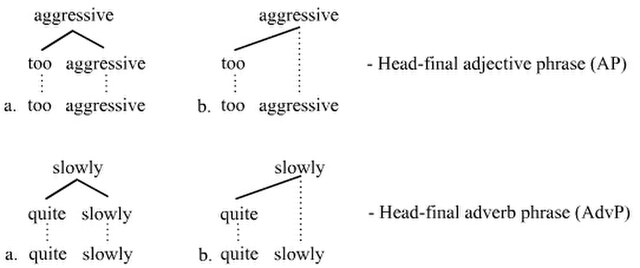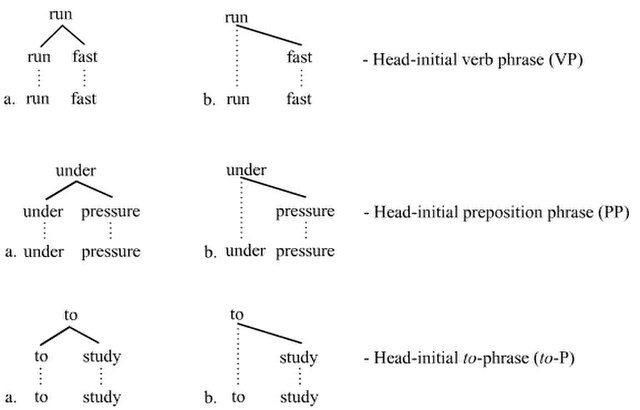In linguistics, the head or nucleus of a phrase is the word that determines the syntactic category of that phrase. For example, the head of the noun phrase boiling hot water is the noun water. Analogously, the head of a compound is the stem that determines the semantic category of that compound. For example, the head of the compound noun handbag is bag, since a handbag is a bag, not a hand. The other elements of the phrase or compound modify the head, and are therefore the head's dependents. Headed phrases and compounds are called endocentric, whereas exocentric ("headless") phrases and compounds lack a clear head. Heads are crucial to establishing the direction of branching. Head-initial phrases are right-branching, head-final phrases are left-branching, and head-medial phrases combine left- and right-branching.
Image: Heads picture 1
Image: Head picture 3
Image: Head medial picture
Image: Kafka English tree
In grammar, a phrase—called expression in some contexts—is a group of words or singular word acting as a grammatical unit. For instance, the English expression "the very happy squirrel" is a noun phrase which contains the adjective phrase "very happy". Phrases can consist of a single word or a complete sentence. In theoretical linguistics, phrases are often analyzed as units of syntactic structure such as a constituent. There is a difference between the common use of the term phrase and its technical use in linguistics. In common usage, a phrase is usually a group of words with some special idiomatic meaning or other significance, such as "all rights reserved", "economical with the truth", "kick the bucket", and the like. It may be a euphemism, a saying or proverb, a fixed expression, a figure of speech, etc.. In linguistics, these are known as phrasemes.
Image: The house at the end of the street
Image: Phrase 2






